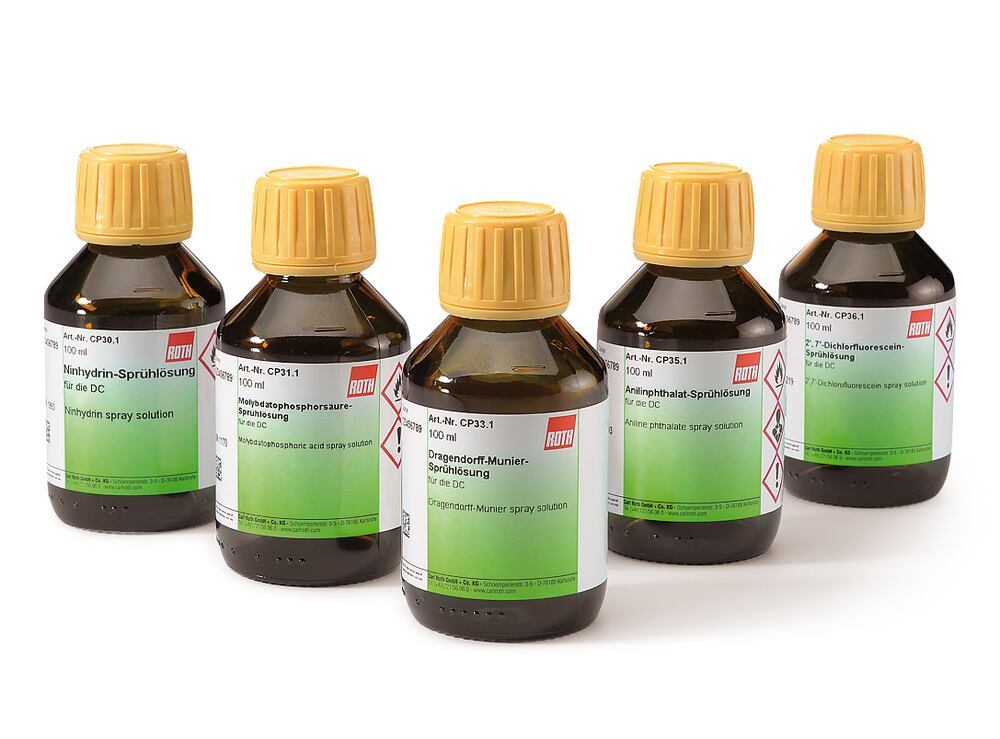Technical Data Sheet
4-(Dimethylamino) benzaldehyde spray solution
Boiling point (bp) 82 °C
Flash point (flp) >12 °C
Melting point (mp) -89 °C
Storage temp. +4 °C
ADR 3 II
WGK 1
UN-Nr. 1219
0,5 g 4-(Dimethylamino)-benzaldehyde dissolved in 100 ml 2-propanol.
€45.05/Pack Qty.
excl. VAT. | 100 ml per Pack Qty.
Art. No. CP38.1
Alternative products
Product details
Further attractive products to complete your chromatography laboratory can be found on our Chromatography page!
4-(Dimethylamino) benzaldehyde spray solution for TLC
- Subtotal: 0.00
| Art. No. | Pack Qty. | Pack. | Price | Quantity | |
|---|---|---|---|---|---|
| CP38.1 | 100 ml | glass |
€45.05 |
|
|
|
In stock
Available
In procurement
No longer available
Delivery date currently unknown
|
|||||
- Subtotal: 0.00
Downloads / MSDS
General information
Further attractive products to complete your chromatography laboratory can be found on our Chromatography page!
Although the principle of thin-layer chromatography is more than a century old, it did not make its breakthrough as an analytical method until about 50 years ago.
Thanks to the development of new sorbents and supports, as well as increasing instrumentation and automation, TLC has become a versatile separation method. It is used both in qualitative analysis and in quantitative analysis.
Applications range from simple manual separation processes in classic TLC to automated processes in HPTLC (high performance thin layer chromatography).
Advantages of thin layer chromatography:
- Higher sample throughput in less time
- Suitable for screening tests
- Pilot process for HPLC
- The ready-to-use TLC layer functions as a data storage device for separation results
- The separated substances can be used later for further analysis (e.g. IR, MS)
- By switching the mobile and the stationary phases, the separation process can be optimised quickly and cost-efficient
Spray solutions
Carl ROTH’s ready-to-use spray solutions make thin-layer chromatography operations considerably easier.
For these ready-to-use spray solutions the staining/derivative reagent was dissolved in ethanol, 2-propanol or in water.
Certificates of Analysis
Type analysis
| TLC-application | complies |

